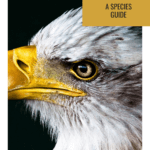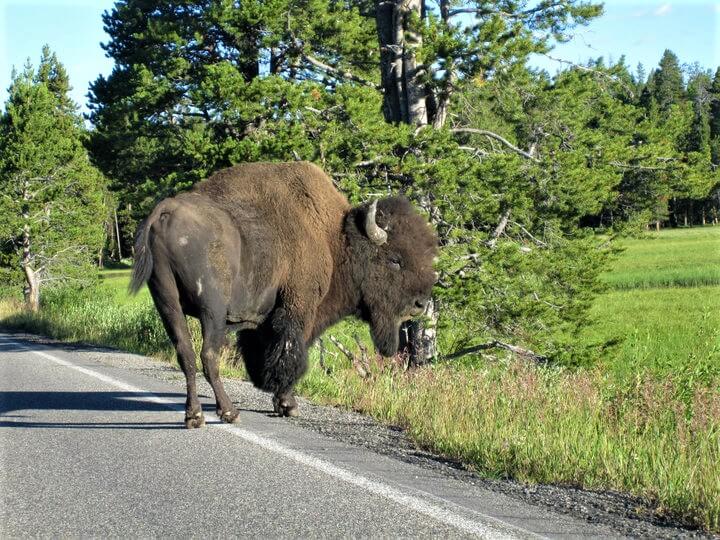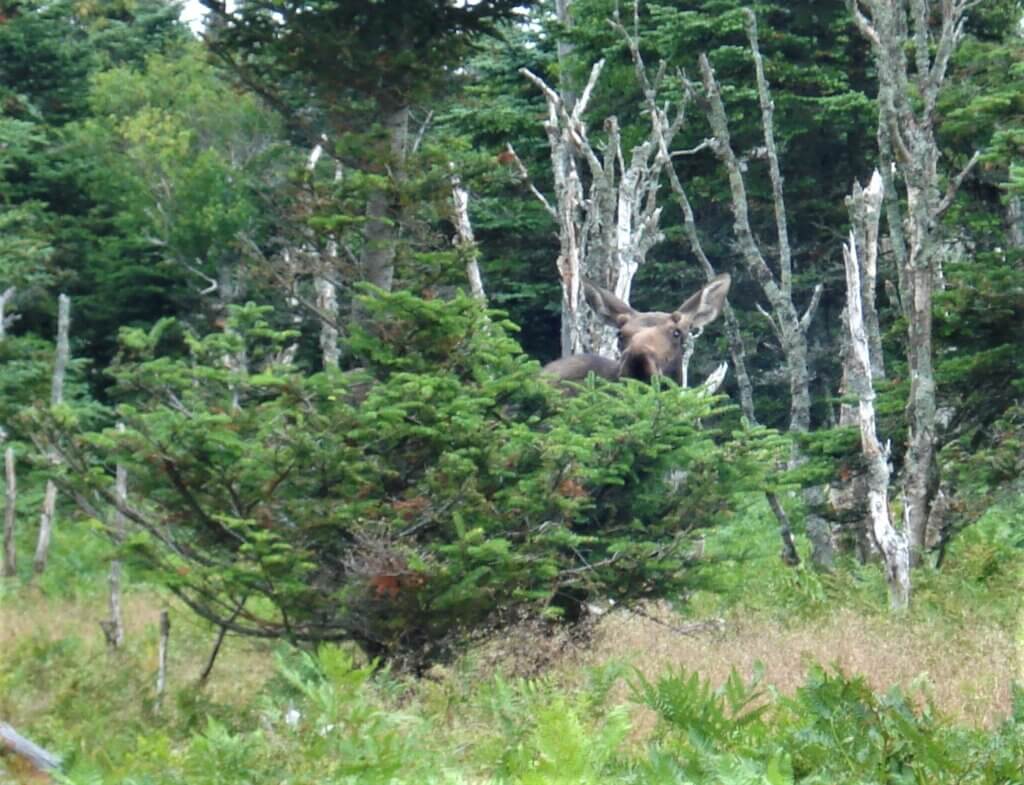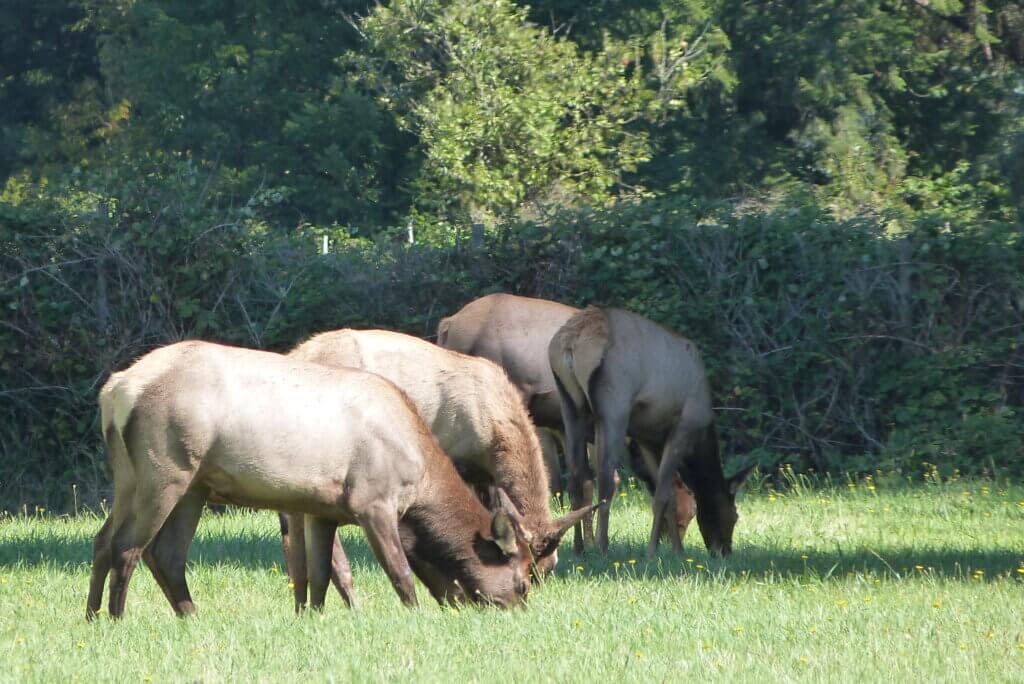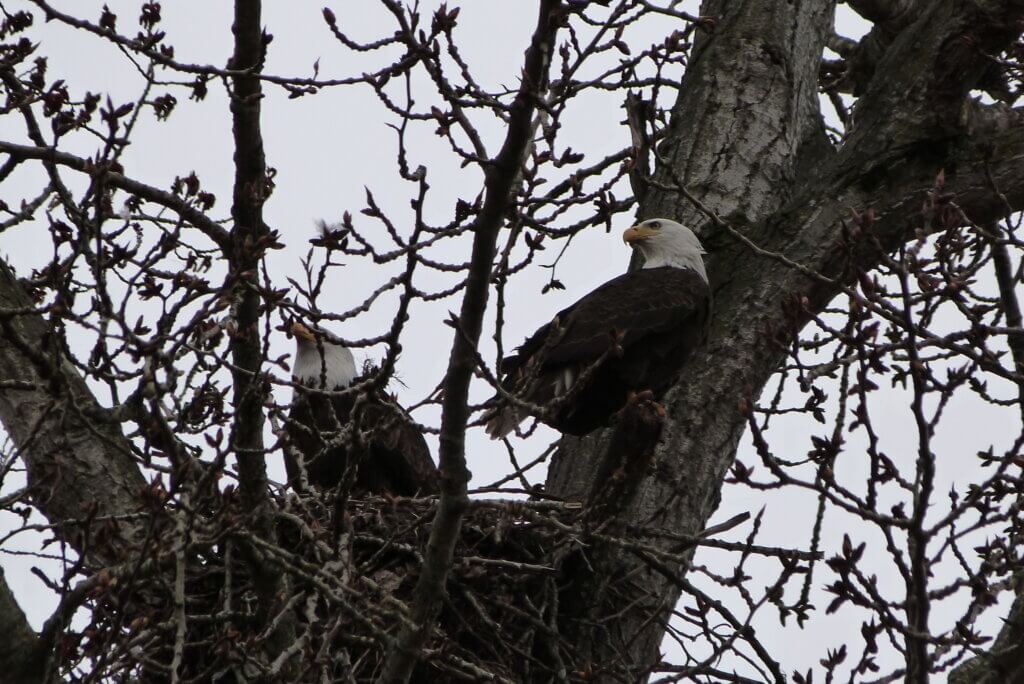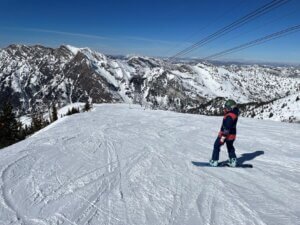*This post contains affiliate links, so when you make a purchase I make a small commission
One of the best things about visiting Yellowstone National Park is being able to witness its incredible wildlife. There are a ton of docuseries and documentaries about the wildlife of this country’s oldest national park but there is nothing like witnessing it firsthand.
So, what kinds of wildlife might you encounter during a trip to Yellowstone National Park and where should you go in the park to see them?
Wildlife viewing in Yellowstone
There are lots of things to think about when you go somewhere specifically for wildlife viewing. Some are practical and safety things and others are where are your best chances of seeing the species you hope to see.
Some of the practical tips are to keep a safe distance and never approach wildlife. They are after all wild animals in their natural habitat and can be deadly if you are to close to them or their young. Sometimes they will give you a warning, such as the bison, they will often start vocalizing and pawing at the ground. Some will bluff charge, like bears. Breeding season can also be a dangerous time, particularly in the ungulates who go through rut. Males are chasing females and fighting with other males. It’s important not to encroach on these animals.
But be smart. An animal that attacks a human because the human was doing something stupid is a dead animal and that’s not fair to the animal that was just acting on its natural instincts.
As for how to see the species of mammals you want to see, early morning or evening are a great time to spot wildlife. For the deer, bison, wolves and even bears one of the best places to see the largest concentration of mammals in large herds are the Hayden Valley and the Lamar Valley. Photographers were come out and set up for the day to capture the large number of animals that can be spotted in these areas.
Large mammals
Wolf packs
The wolves of Yellowstone are part of a huge conservation success program. At one time roaming across the continent, wolf numbers have dwindled due to habitat loss and extermination programs to the point that almost led them to the brink of extinction.
In 1973, the US Fish and Wildlife service listed the northern Rocky Mountain wolf as endangered and designated Yellowstone as one of three recovery zones. Between 1995-1997 41 wild gray wolves were relocated from Canada and Montana to Yellowstone.
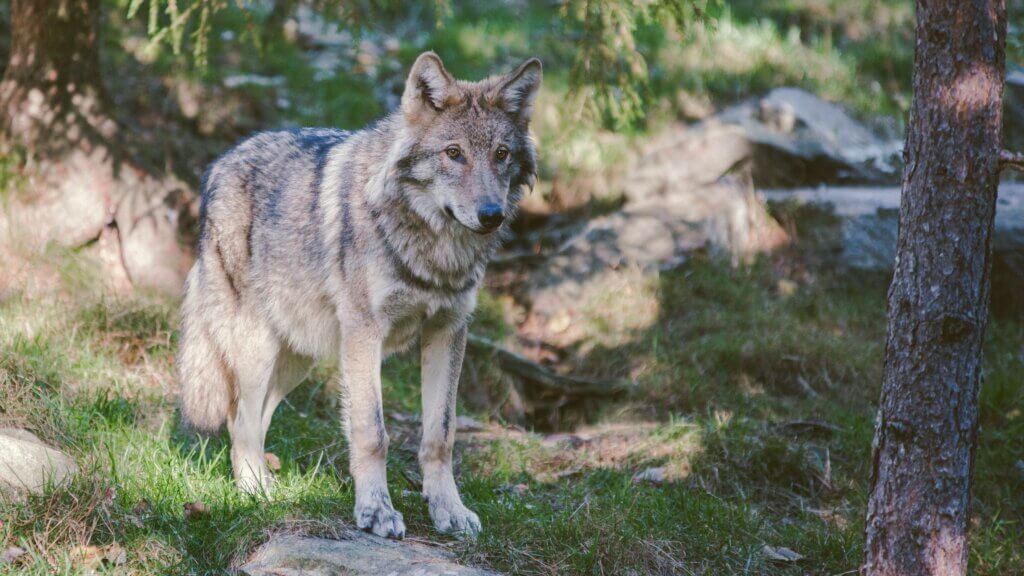
Thanks to this conservation program, in some states, the grey wolf has been delisted and is no longer considered endangered. Though the highest cause of death in these animals is still from humans, disease also crops up from time to time, particularly diseases like distemper and mange.
The recovery of these animals has once again brought about some semblance of balance in the Greater Yellowstone ecosystem as large predators, like wolves are keystone species that balance other mammal populations in the system.
American Bison
Probably the most iconic animal in the park, Yellowstone bison are the animals you see cars pulled over to get photos of and the ones causing traffic jams. They are also one of the most dangerous animals in the park, causing several deaths a year because people do not heed the warnings by park officials.
I also want to clear one thing up. They are not buffalo. There is a difference. Buffalo live in Africa; Bison live in North America. It’s a term that was coined a long time ago and a common misnomer. Same family, different species.
These hardy animals seem to be able to handle the roughest of climates. They also have seriously hard heads, the males demonstrating this during mating season when fighting over the ladies. But don’t get too close to these imposing animals, they might seem like their docile cousins the cow, but they are a wild animal and they don’t take too kindly to people getting too close.
Bears
You would think that bears would be the most dangerous animal in the park, and bears can certainly be dangerous but in most cases they are more afraid of you than you are of them. As long as you don’t startle them or come into contact with a momma and her cubs, you’re likely to be just fine.
A recent study found that in order to preserve energy during the spring, summer and fall months, when they are fattening up for the winter, they take the easiest path and the flattest paths available. That tends to be the paths created for hikers. So, there is a good chance you will see a bear in the park, either up close or in the distance. And you can see both black bears and grizzly bears in the park.
Follow the park rules when it comes to bears and you will be fine. Give them the respect they deserve by not provoking them, because a provoked bear and a habituated bear (one that is used to humans and getting food from humans) is a dead bear. And no one wants that.
Moose
Moose are quirky animals with the face of a goofy horse and the tall lanky body reminiscent of a very large deer, these animals are fun to see. But keep your distance, bull moose (males) are known to be aggressive.
These animals are herbivores, like the bison, so they aren’t interested in eating you, but they like their space. Seeing a moose in it’s native habitat is one of those amazing encounters I personally will never forget and have been lucky enough to see them in several places.
You just never know where you will see them, they could be browsing on the trees next to the hiking trail, or, as was in my case, right outside my hotel room a momma and her calf having a morning meal in the marsh. Perfection.
Elk
Elk are another funny cervid (deer family). I just can’t get over their white butts. For some reason it makes me smile every time. Cute butts aside, these animals are absolutely majestic to look at.
They travel is herds and can be seen lounging in the grasses in populated towns or on wide expanses of field within the park. They are also the most abundant large mammal in the park.
One disease threatening both elk and moose and another species below (deer) is chronic wasting disease. A prion disease, similar to mad cow, these beautiful animals begin wasting away until they become severely emaciated and eventually become neurologic as the prion pokes holes in the brain tissue.
It is 100% fatal with no cure and has the potential to devastate cervid populations. It is close to this area of the country and one officials are taking very serious in the hopes of protecting all cervid species from elk to moose to reindeer to deer.
Mountain goats
You will need to go to the higher elevations to see these guys. However, mountain goats are not a native species to the greater Yellowstone area and there is concern that their increasing numbers could negatively impact the alpine habitat and outcompete the native bighorn sheep in the area.
How did they get there? In the 1940s and 50s they were introduced into the Absaroka and Madison mountain ranges and then established in Yellowstone in the 90s from there. If you want to see them, they can often be found in the northeastern and northwestern ranges of the park, though keep in mind that these animals should not be here, this is not part of their historic range and by them being there is can have negative impacts on the native flora and fauna.
Deer species
There are two main species of deer that can be seen in the park, the mule deer and the white-tailed deer. These guys are everywhere and are always a beautiful animal to encounter. You are likely to come across them during one of your hikes.
Mountain lions AKA cougars
These animals are a top predator that is native to the greater Yellowstone area. They were part of the same culling that occurred with the wolves, however, they managed to survive in the area due mostly to their highly secretive nature. They eventually re-established themselves in the part in the 80s and there are around 34-42 animals, with a few others coming in seasonally.
You are unlikely to see these animals due to their secretive nature, but if you do encounter one, stay in a group, carry small children and make noise to keep them away.
Small mammals
Red foxes
I love foxes don’t you? Such charismatic animals. In the winter you can see them listening intently below the surface of the snow for little critters before diving straight in. In the summers you might be lucky enough to catch a glimpse of a family of foxes, with mom and her pups.
These wily animals have also been known to steal food and personal items, like shoes. So keep you items properly stowed and cared for or you may not have them come morning.
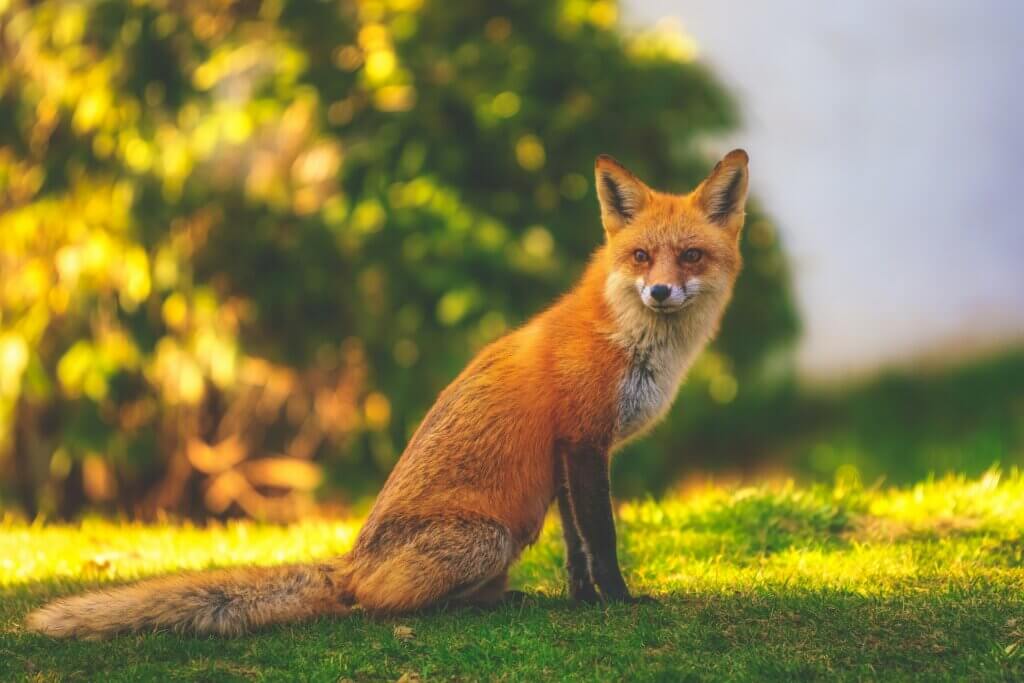
I love foxes don’t you? Such charismatic animals. In the winter you can see them listening intently below the surface of the snow for little critters before diving straight in. In the summers you might be lucky enough to catch a glimpse of a family of foxes, with mom and her pups.
These wily animals have also been known to steal food and personal items, like shoes. So keep you items properly stowed and cared for or you may not have them come morning.
Long-tailed weasels
These animals are super cute. You are likely to see them in forests, open grassy meadows, and marshes near water. They are not a social animal so you will often see one. Your best bet is to go early morning or at dusk to have the best chance at spotting one.
Yellow-bellied marmots
One of the largest rodents in Yellowstone, they can be found in the lowest valleys and alpine tundra, usually in open grassy communities and almost always near rocks. They do hibernate for 8 months of the year and will generally emerge between February and March and are active in the morning, late afternoon and evening.
Snowshoe hare
This common species in Yellowstone is best seen in the Norris Geyser Basin area preferring coniferous forests with dense understory of shrubs, riparian areas with many willows, or low areas in spruce-fir cover. However, they are mostly nocturnal, so plan accordingly.
Pika
Not many people consider some of the smaller mammals that can be found in the park. They don’t get overly excited about wild hare or squirrels, but they are all there for your viewing pleasure. They just don’t get the love that some of the larger animals get.
So, we are going to include the Pika here. Do you know what a Pika is? Pika are in the same family as rabbits (lagomorphs) and are considered an indicator species for detecting the ecological impacts of climate change. See how special they are and why you should want to see them?
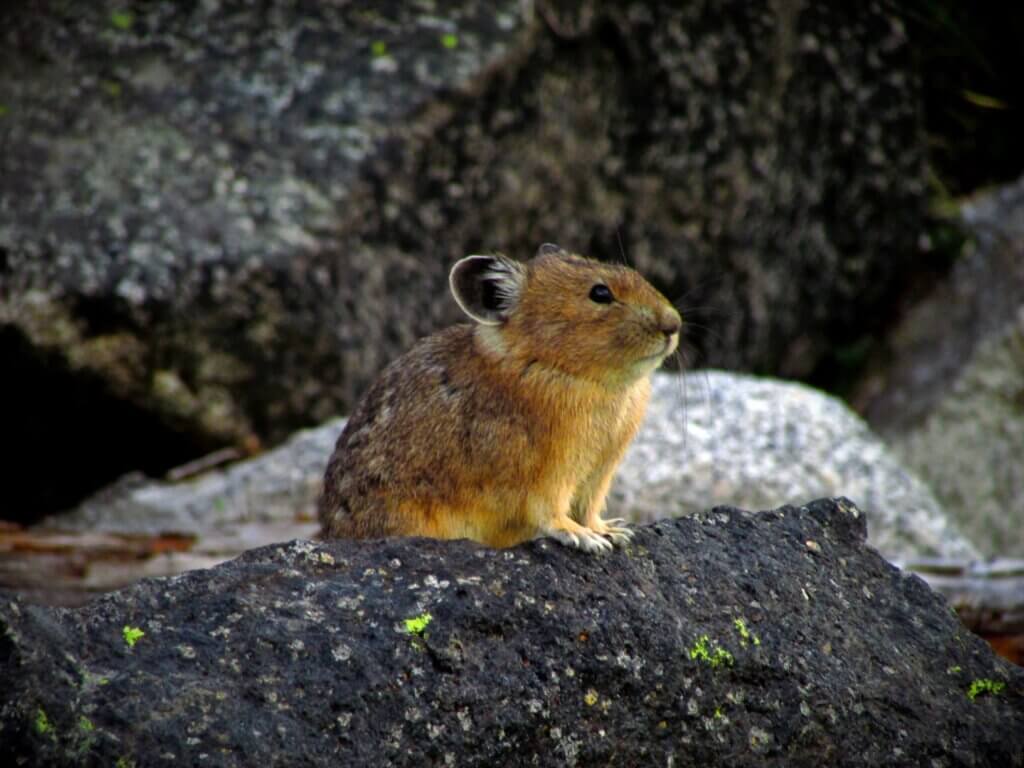
At about the size of a guinea pig, they can be a challenge to see but have been spotted most at Mammoth and Tower areas. They are extremely territorial and like rocky areas.
I was not lucky enough to spot one during my visit, but I hope you do!
Bird species
There have been 300 species documented in the park with around 150 species nesting in the area. Because Yellowstone has such diversity in habitat it can support such diversity in bird species, many of which are migratory. Currently, there are no listed species found nesting in the park but there are three species of concern that are being monitored, the trumpeter swans, the golden eagles and the common loon.
Long term monitoring helps park staff recognize how shifts in things like climate change are impacting some of the more sensitive species. Yellowstone’s bird program monitor’s these species, with its core activities monitoring raptors such as bald eagles and peregrine falcon, wetland birds and passerines (songbirds).
Species of amphibians
There are 5 amphibian species found in the park and they are an important part of the aquatic and terrestrial ecosystem. These include Western tiger salamander, boreal chorus frog, Western toad, Columbia spotted frog, and plains spadefoot toad.
There is a significant amount of monitoring done of these species as not only are they an important food source for other animals in the park, they are also sensitive to pollution, disease and ecosystem changes and are therefore an indicator of ecosystem health. Most of the species are abundant in the park and some can be seen in large groups during breeding season. Head over to the NPS Amphibian page to learn more about the work being done and more on the species you may encounter.
Species of fish
Yellowstone has 12 fish species native to its streams and lakes. Yellowstone cutthroat trout are the most abundant species in the park and are an important food source for around 16 species of birds and mammals.
Concluding Thoughts
If you are heading to the Yellowstone area for some hiking or to check out the incredible ongoing volcanic activity, make sure you take the time to explore and search out the many species of wildlife that call Yellowstone their home.
This area is a wildlife enthusiasts dream and should be an important part of your next visit to Yellowstone National Park. To plan your visit check out my post on visiting Yellowstone and Grand Teton National Parks.

